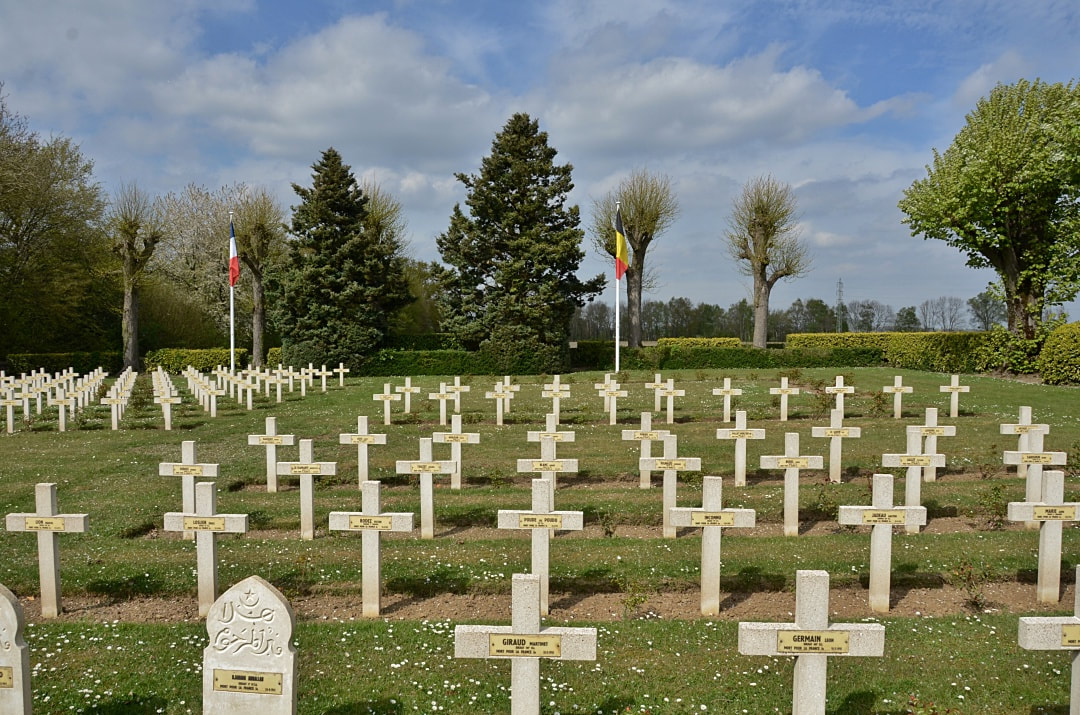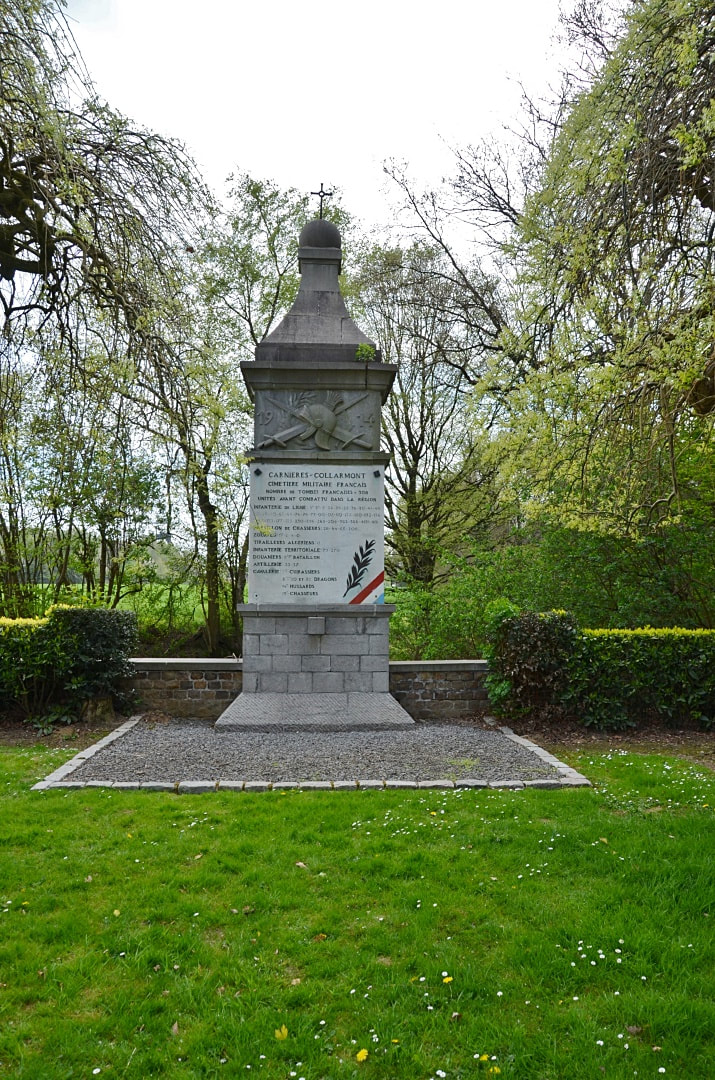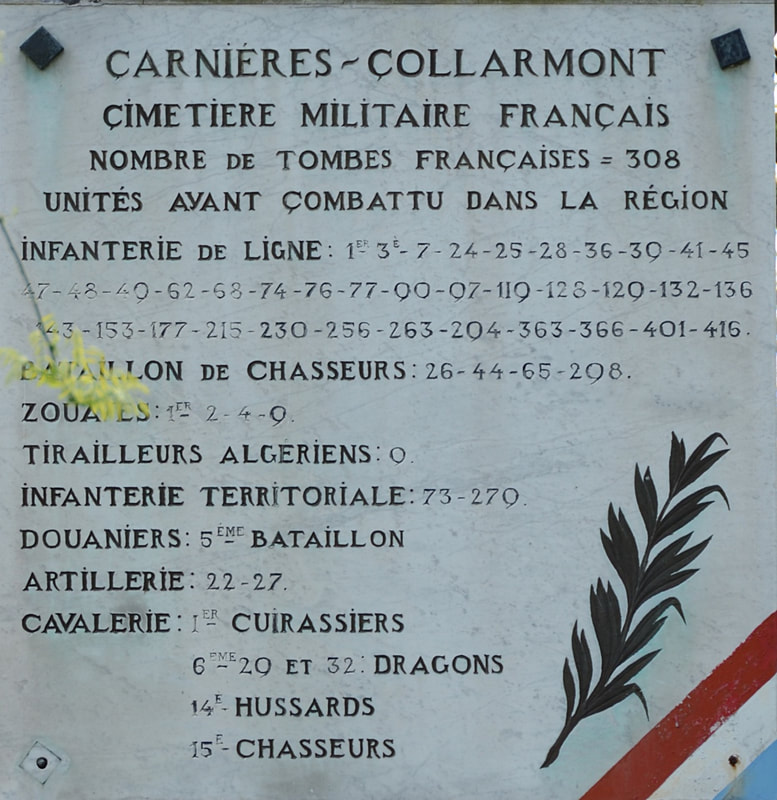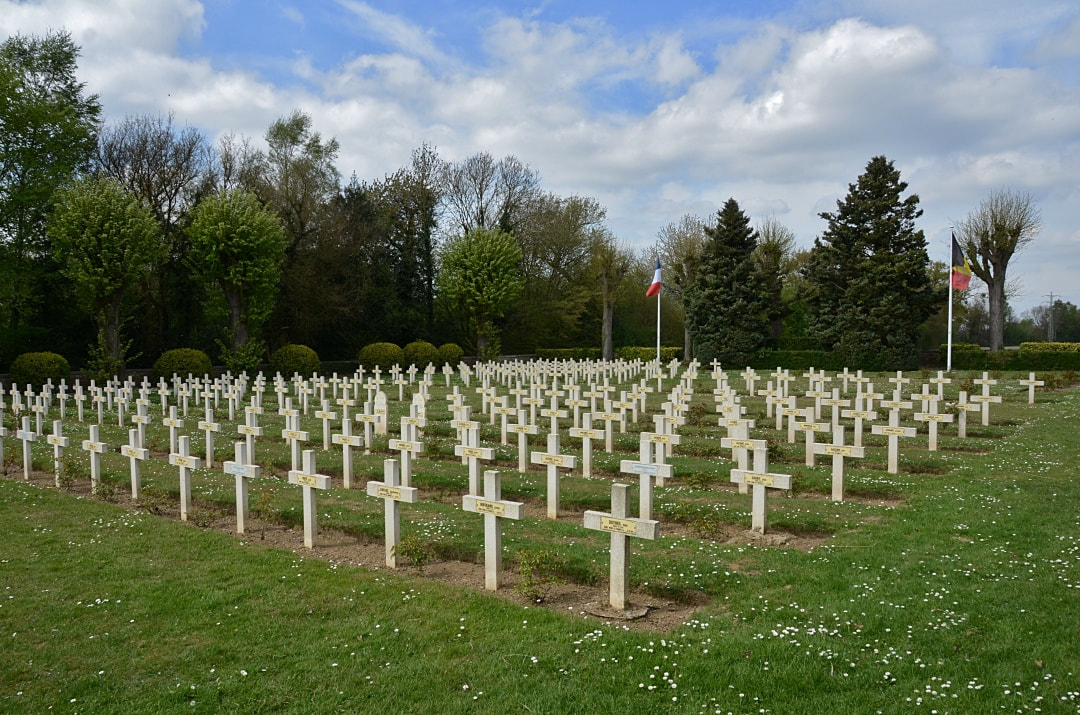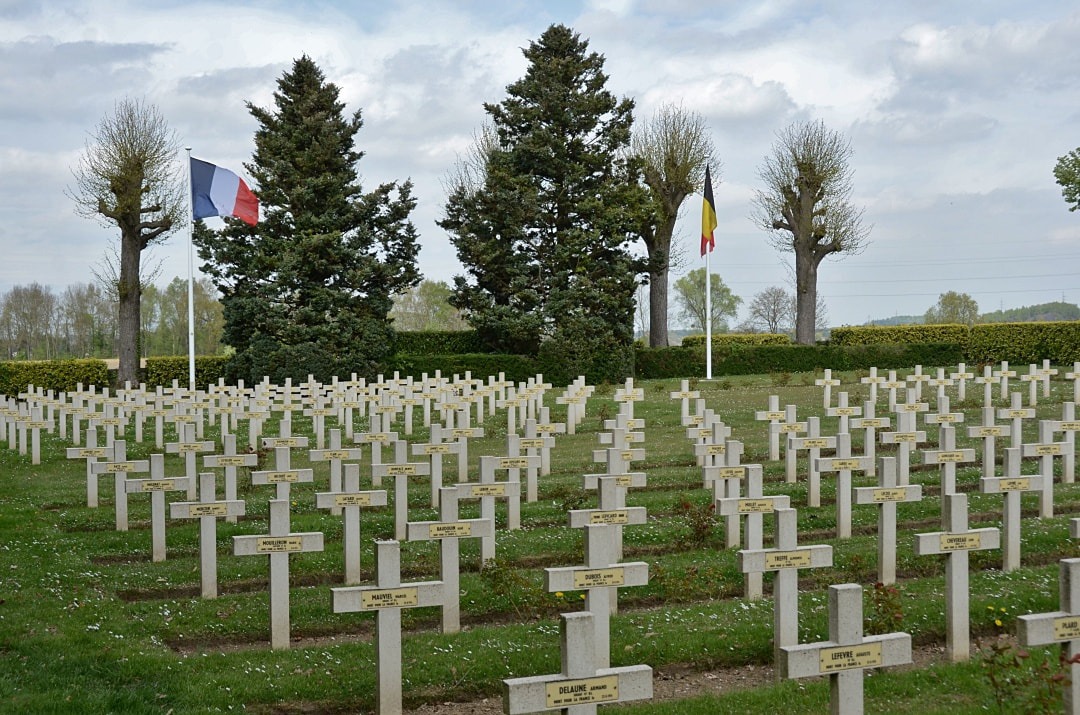CARNIÈRES-COLLARMONT FRENCH MILITARY CEMETERY
Hainaut
Belgium
GPS Coordinates: 50°25'28.9"N 4°15'32.0"E
Location Information
Carnières is a small town in the Hainaut province of Belgium, to the west of Brussels.
Historical Information
There are five French military cemeteries in the region covered by the battles of the Sambre: Belle-Motte at Aiseau-Presles, Auvelais at Tamines, Heuleu at Lobbes, Collarmont-Carnières, and Tarcienne. A French law of December 1915 regulated the creation of national necropolises (burial grounds) for the bodies of those who died fighting for France. The tombs are set in row, with red roses adding the only touches of bright colour. Four types of emblem mark the graves: a Latin cross, a Muslim tombstone, a Jewish tombstone and a tombstone for other faiths and free-thinkers.
A military cemetery was created on the territory of Carnières, on the edge of Anderlues, following a Red Cross general assembly on 8 November 1917. The mayor of Carnières and two French delegates selected the site and the municipality of Carnières paid for the land and work. The Red Cross bore the expense of the exhumations and coffins. A request concerning the cemetery’s site was submitted to the German Civil Commissioner of Thuin. The principle of a cemetery on its present location was approved on 15 March 1918, and the Governor-General of Belgium handed over the cemetery’s management to the municipality of Carnières on 23 August 1918. After the transfers of German, British, and French graves, the tombs of 247 French soldiers currently remain in the French national necropolis of Collarmont.
The Carnières-Collarmont French Military Cemetery contains 248 French graves from the early battles of 1914.
Carnières is a small town in the Hainaut province of Belgium, to the west of Brussels.
Historical Information
There are five French military cemeteries in the region covered by the battles of the Sambre: Belle-Motte at Aiseau-Presles, Auvelais at Tamines, Heuleu at Lobbes, Collarmont-Carnières, and Tarcienne. A French law of December 1915 regulated the creation of national necropolises (burial grounds) for the bodies of those who died fighting for France. The tombs are set in row, with red roses adding the only touches of bright colour. Four types of emblem mark the graves: a Latin cross, a Muslim tombstone, a Jewish tombstone and a tombstone for other faiths and free-thinkers.
A military cemetery was created on the territory of Carnières, on the edge of Anderlues, following a Red Cross general assembly on 8 November 1917. The mayor of Carnières and two French delegates selected the site and the municipality of Carnières paid for the land and work. The Red Cross bore the expense of the exhumations and coffins. A request concerning the cemetery’s site was submitted to the German Civil Commissioner of Thuin. The principle of a cemetery on its present location was approved on 15 March 1918, and the Governor-General of Belgium handed over the cemetery’s management to the municipality of Carnières on 23 August 1918. After the transfers of German, British, and French graves, the tombs of 247 French soldiers currently remain in the French national necropolis of Collarmont.
The Carnières-Collarmont French Military Cemetery contains 248 French graves from the early battles of 1914.

